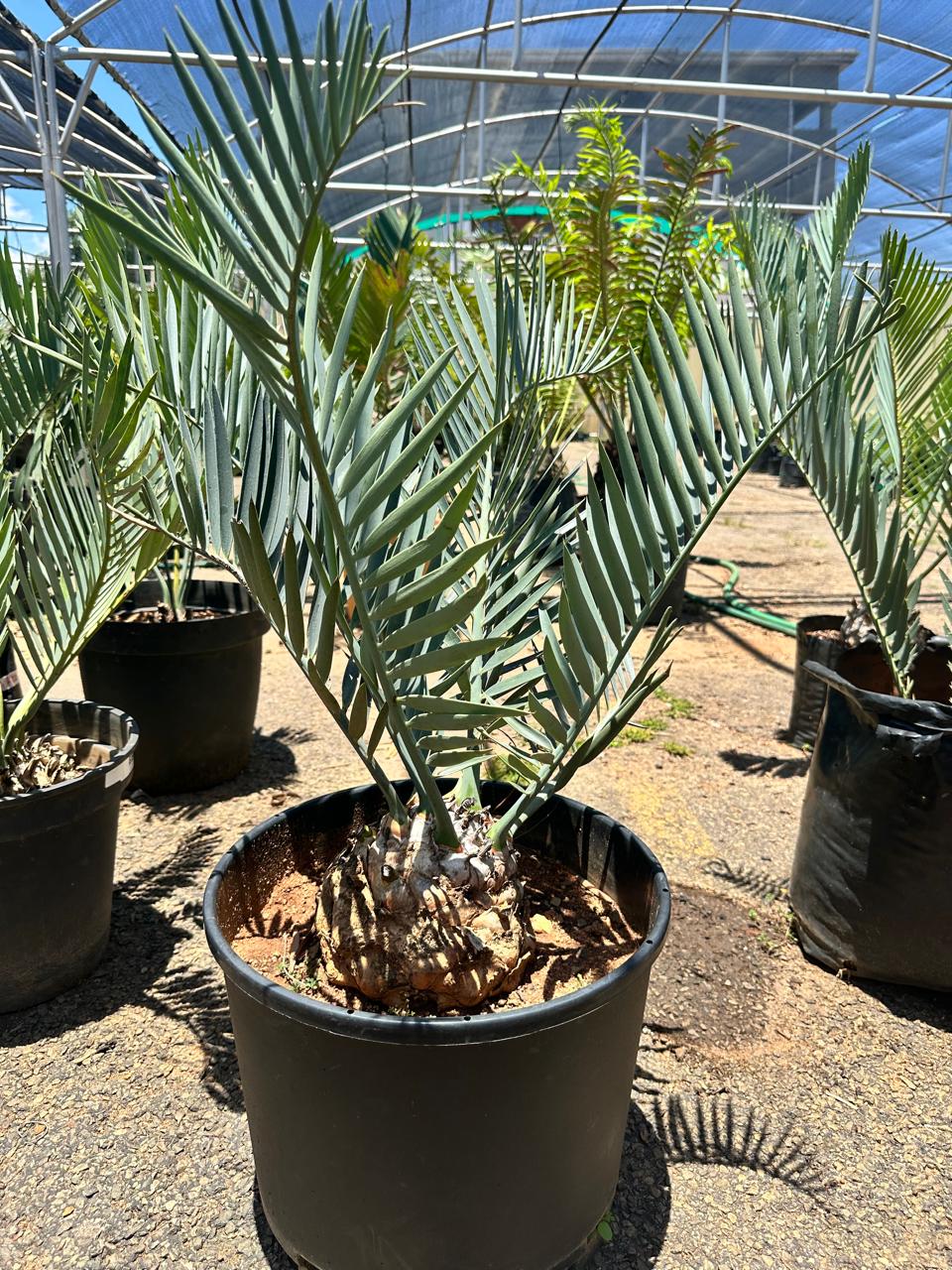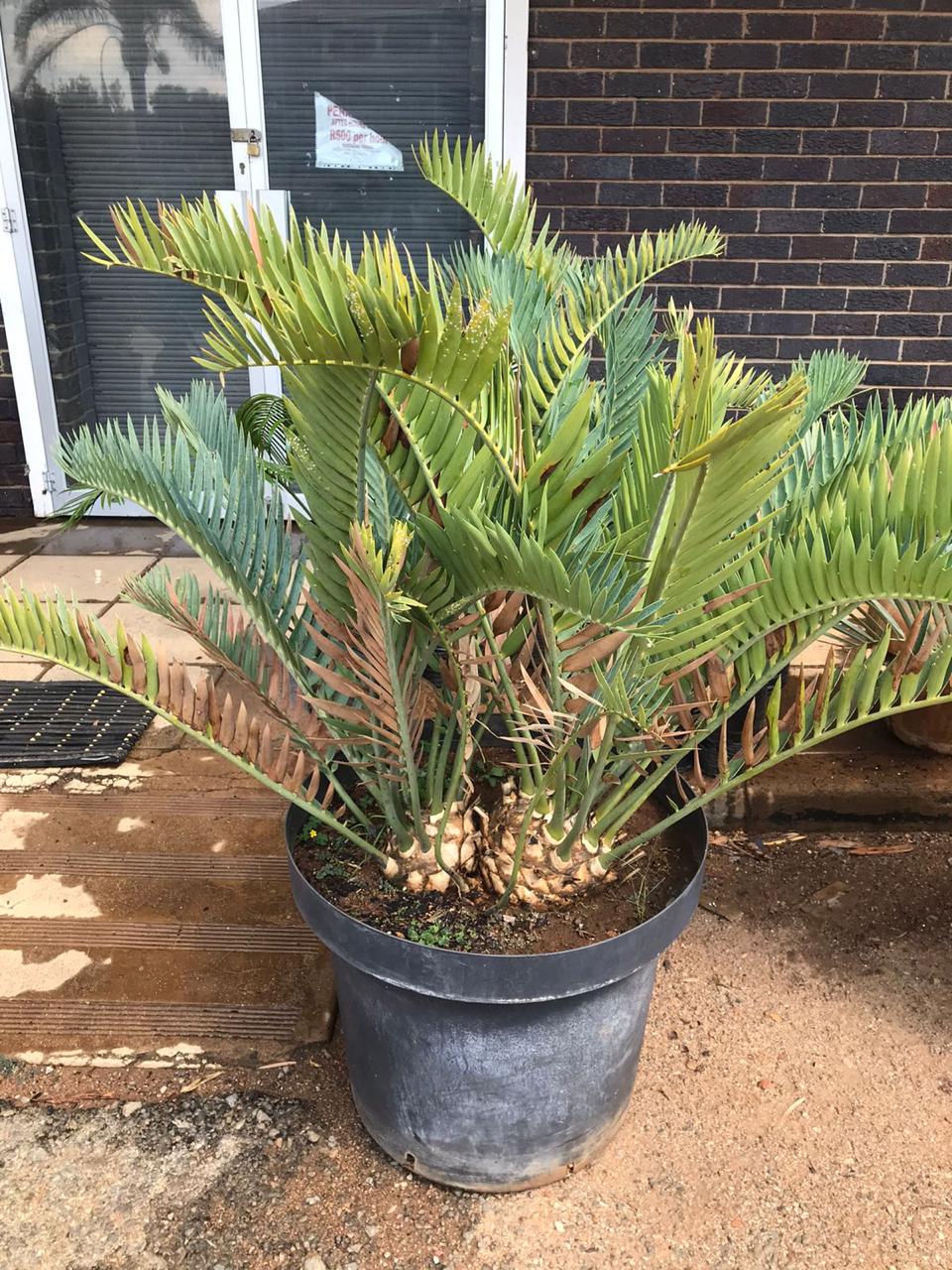

Encephalartos lehmannii
The Karoo cycad (Encephalartos lehmannii) is the most drought-resistant of the Encephalartos species, thriving in the semi-arid regions of the Great Karoo in South Africa. It is found in areas with rocky soils and sparse vegetation, often growing on sandstone hills and dry mountain slopes in the Eastern Cape.
Cones
Both male and female E. lehmannii produce a single cone per stem. Female cones are barrel-shaped, 45-50 cm in length and 20-25 cm in diameter, while male cones are cylindrical and smaller. The cones are initially green with a bluish bloom that fades as they mature, eventually turning a reddish-brown. The cone scales are smooth, with a distinctive raised “beak” on each facet. Cones appear infrequently, typically only every two to three years, as part of the species' slow growth cycle in its arid environment.
Leaves
The bluish-grey leaves of E. lehmannii are rigid, straight, and about 1.0 to 1.5 meters long, often slightly recurved. The leaflets are typically 12-18 cm long and 1.7-1.9 cm wide, arranged in pairs along the rachis. The leaflets are usually toothless but occasionally have a few small teeth near the base. New leaves retain a bluish tinge for a while before turning dark green. The leaflets are smooth, with a leathery texture, and provide the plant with drought resistance in its harsh environment.
Stems
The stems of E. lehmannii are short and sturdy, reaching up to 1.5 meters in height. These gray-green stems have a rough, papery texture, and the leaf bases remain attached for several years, providing structural support. The plants often produce multiple suckers from the base, forming clumps. In their natural habitat, the stems are subject to damage from porcupines and other animals, but the plant often regenerates by producing new shoots. The stems blend well with the surrounding rocky environment.